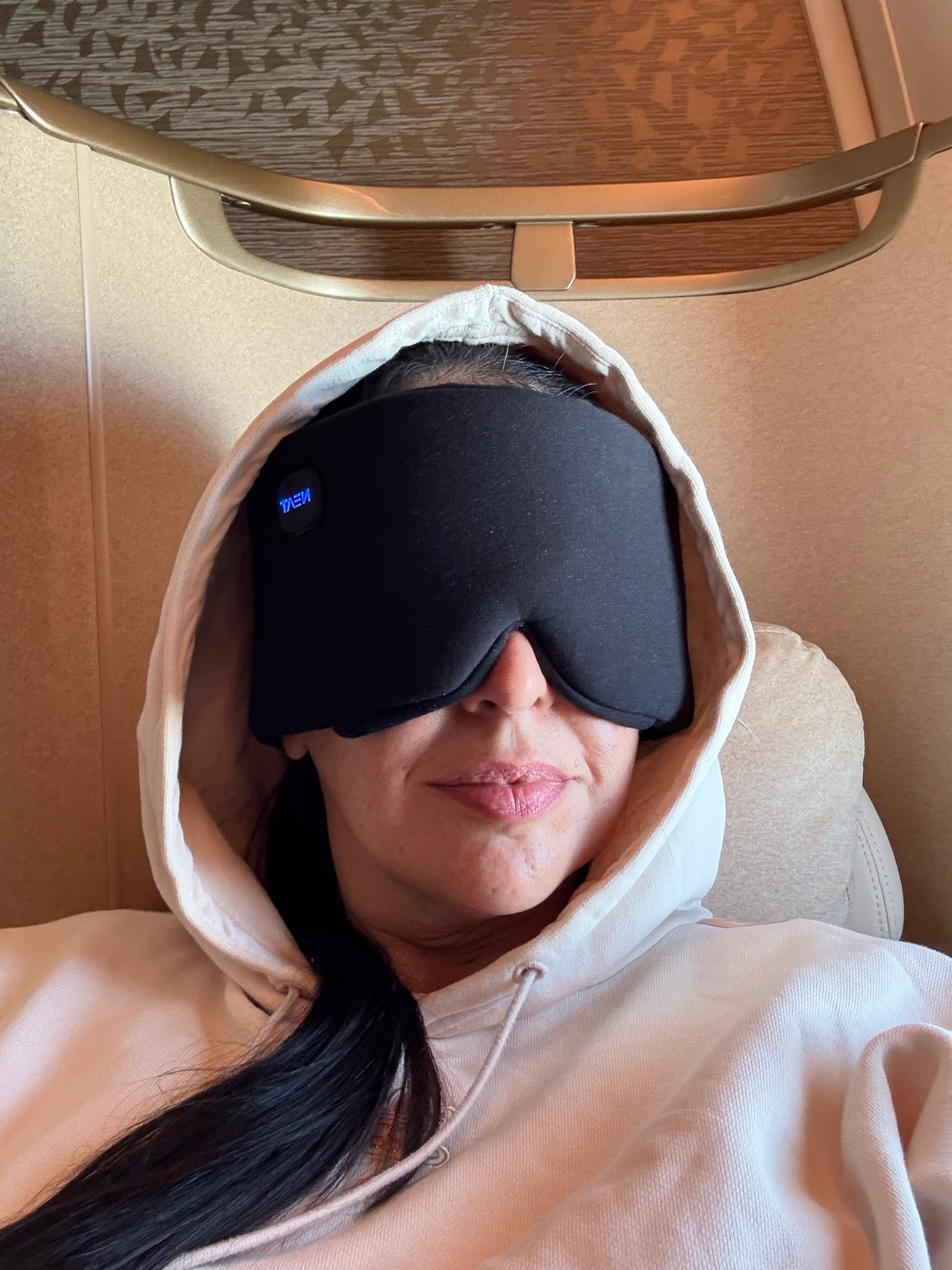I used to think jet lag was just about adjusting your watch. Then came the long-haul flights, the hotel rooms with flimsy curtains, and the bright airport lounges where my body was begging to rest but light kept saying, “Nope, it’s daytime.” That’s when I discovered the power of eye masks—not just for blocking light, but for signaling to my brain that it was time to switch off, no matter what time zone I was in.
Why light control is key to beating jet lag
Our circadian rhythm—the body’s internal clock—depends heavily on light. Even a small amount of exposure can suppress melatonin, the hormone that regulates sleep. When you travel across time zones, this throws everything off. Studies show that controlling light exposure is one of the most effective ways to reset your rhythm faster, making eye masks one of the simplest tools for reducing jet lag.
My first travel experiments
On early trips, I relied on flimsy fabric masks handed out on flights. They slipped, let in light, and left me waking up groggy. Later, I tried disposable heated masks, which felt nice but weren’t practical for a week of travel. What finally worked was bringing a blackout heated eye mask with me. It not only blocked every trace of cabin light, but the warmth helped me relax even in an upright seat. For the first time, I actually slept on a plane.
How different masks stack up for travel
| Mask Type | Light Blocking | Comfort Level | Best For Travel | My Experience |
|---|---|---|---|---|
| Standard Airline Mask | Partial | Medium | Free & light | Better than nothing, but not reliable. |
| Disposable Heated Mask | Moderate | Cozy once | Short flights | Relaxing, but single-use waste. |
| Neat Sunday Heated Eye Mask | Full blackout | Luxurious | Planes, hotels, daily use | Consistent, soothing, reusable—became my go-to travel tool. |
Honest pros and cons
Travel-friendly masks need to balance portability and performance. Disposable masks are light but wasteful, and regular airline masks aren’t truly blackout. A rechargeable heated mask is bulkier to pack, but for me, the payoff is worth it: restful sleep and calmer eyes after long flights.
My travel ritual now
Whenever I travel, my eye mask is as essential as my passport. On flights, I put it on the moment I want to nap. In hotels, it blocks out unfamiliar lights and helps me slip into routine faster. The warmth takes the edge off screen fatigue and dryness, making transitions to new time zones smoother.
Final thoughts
Jet lag can’t be eliminated, but it can be managed. Controlling light exposure is one of the most powerful ways to do it, and a blackout mask—especially one with gentle heat—turns chaos into ritual. For me, it’s become the quiet travel companion I didn’t know I needed.
Common questions
Can eye masks really help with jet lag?
Yes. By blocking light, they support melatonin production and help your body adjust faster.
Are heated masks practical for travel?
Rechargeable designs are portable and last several sessions per charge, making them travel-friendly.
What about hotel rooms with blackout curtains?
They help, but light often sneaks in. Masks give you consistent darkness anywhere.
Do heated masks also help dry eyes while traveling?
Yes. Gentle heat soothes eyes strained by dry airplane cabins and screen use.

